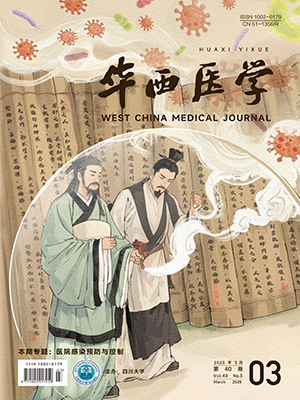| 1. |
于丽华. 中国日间手术发展的历程与展望. 中国医院管理, 2016, 36(6): 16-18.
|
| 2. |
白雪, 马洪升, 罗利. 中外日间手术发展对比研究及展望. 中国医院管理, 2014, 34(5): 35-37.
|
| 3. |
Rosero EB, Joshi GP. Hospital readmission after ambulatory laparoscopic cholecystectomy: incidence and predictors. J Surg Res, 2017, 219: 108-115.
|
| 4. |
李志超, 马洪升, 杨建超, 等. 日间手术医疗质量与安全保障系统构建的对策研究. 华西医学, 2017, 32(4): 493-496.
|
| 5. |
戴燕, 马洪升, 张雨晨. 华西日间手术护理管理制度规范构建与实践. 华西医学, 2017, 32(4): 497-499.
|
| 6. |
国家卫生计生委国家中医药管理局. 关于印发进一步改善医疗服务行动计划的通知: 国卫医发〔2015〕2 号. 中华人民共和国国家卫生和计划生育委员会公报, 2015(1): 7-11.
|
| 7. |
国家卫生计生委, 国家中医药管理局. 关于印发进一步改善医疗服务行动计划(2018-2020 年)的通知: 国卫医发〔2017〕73 号. 中华人民共和国国家卫生和计划生育委员会公报, 2017(12): 41-45.
|
| 8. |
国家卫生健康委办公厅. 关于印发医疗机构日间医疗质量管理暂行规定的通知: 国卫办医政发〔2022〕16 号. 中华人民共和国国家卫生和计划生育委员会公报, 2022(11): 4-6.
|
| 9. |
Buffer JR. Hospital cost analysis. Norwell: Kluwer Academic Publishers, 1995: 20-25.
|
| 10. |
简伟研, 胡牧, 崔涛, 等. 运用疾病诊断相关组进行临床服务绩效评价初探. 中华医院管理杂志, 2006, 22(11): 736-739.
|
| 11. |
简伟研, 崔涛, 王洪源, 等. 诊断相关组死亡风险分级在医疗质量评估中的应用. 北京大学学报(医学版), 2007, 39(2): 145-148.
|
| 12. |
郭默宁, 刘婉如, 张瑾慧, 等. 基于 DRGs 的住院医疗服务绩效评估平台介绍. 中华医院管理杂志, 2015, 11(31): 878-880.
|
| 13. |
魏文斌. 同仁眼科日间手术. 北京: 人民卫生出版社, 2018: 3-7.
|
| 14. |
曾勇. 四川大学华西医院三个准入力保质量安全. 健康报, 2021-12-09(6).
|
| 15. |
孙泽勇, 税章林, 马洪升, 等. 四川省某医院日间手术应用效果调查. 医学与社会, 2015, 5(28): 1-3.
|
| 16. |
李灿萍, 黄寿奖, 王东披, 等. 小儿日间手术标准化管理实践与探索. 中华医院管理杂志, 2019, 35(3): 209-212.
|
| 17. |
付晶, 魏文斌, 马张芳, 等. 我院眼科日间手术管理模式的发展及探索. 中国医院管理, 2018, 38(8): 51-52.
|
| 18. |
蒋丽莎, 马洪升. 中国日间手术高质量发展之我见. 华西医学, 2023, 38(2): 161-163.
|
| 19. |
国务院办公厅. 国务院办公厅关于推动公立医院高质量发展的意见: 国办发〔2021〕18 号. 中华人民共和国国务院公报, 2021(17): 174-178.
|
| 20. |
郑佳, 伍冀湘, 王宁利, 等. 我院开展日间手术的效果评价与分析. 中国医院管理, 2014, 34(8): 27-29.
|
| 21. |
张潘, 潘振宇, 李锟, 等. 各地日间手术医保管理政策的梳理与分析. 中国医院管理, 2021, 5(41): 55-59.
|




